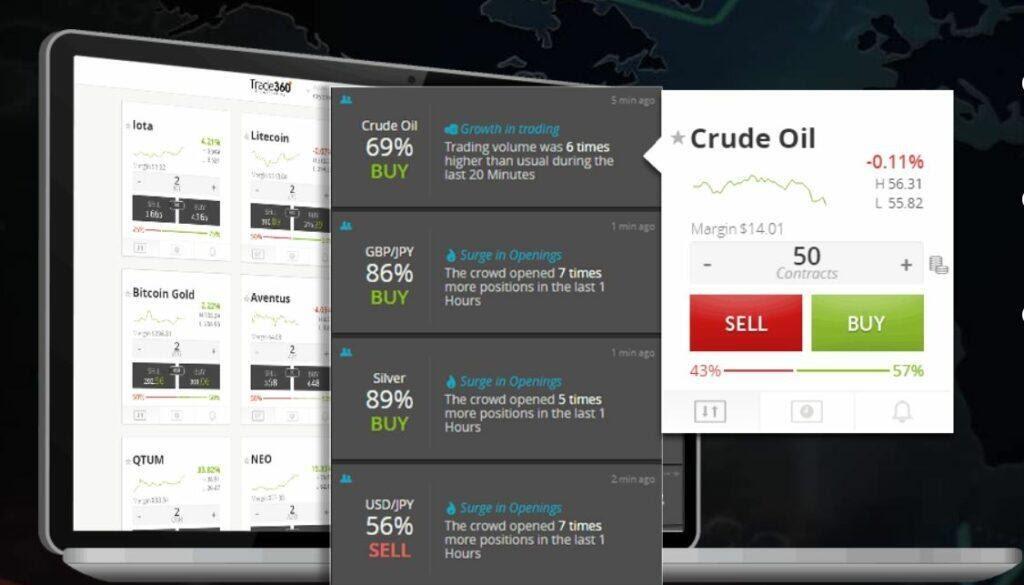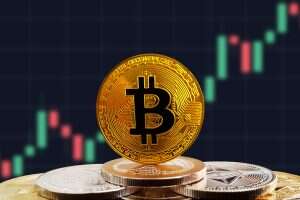
ETFs held about $10 trillion in assets at year-end 2021, reaching historic highs for the fast-growing asset class. ETFs allow investors to buy a collection of assets in just one fund, and they trade on an exchange like a stock. They’re popular because they meet the needs of investors, and usually for low cost. Shares of ETFs may be bought and sold throughout the day on the exchange through any brokerage account.

Here are a few of the key differences between ETFs, mutual funds and stocks. In this example, the AP is buying stock on the open market worth $100 per share but getting shares of the ETF that are trading on the open market for $101 per share. This process is called creation and increases the number of ETF shares on the market. If everything else remains the same, then increasing the number of shares available on the market will reduce the price of the ETF and bring shares in line with the NAV of the fund. Because ETFs have become increasingly popular with investors, many new funds have been created, resulting in low trading volumes for some of them.
Low-cost investing
Exchange-traded funds (ETFs) can be an excellent entry point into the stock market for new investors. They’re cheap and typically carry lower risk than individual stocks since a single fund holds a diversified collection of investments. Since their introduction in 1993, exchange-traded funds (ETFs) have exploded in popularity with investors.

Rather than hand-picking an array of stocks and paying a fee for each purchase, you can choose a fund that does the work for you. If the price of the security rises before you sell it, you keep all the gains after repaying the loan (and interest). However, if the price of the security drops substantially, you could lose more than your initial investment. Depending on these market forces, the market price may be above or below the NAV of the fund, which is known as a premium or discount.
Industry/Sector ETFs
However, some are higher risk depending on their features, including industry-specific ETFs and cryptocurrency funds. The market price can change throughout the trading day and may be above or below the total value of the stocks and bonds the ETF invests in. Though the difference is usually small, it could be significant when the market is particularly volatile. ETFs are subject to market fluctuation and the risks of their underlying investments. The VegTech Plant-based Innovation & Climate ETF (EATV) is an actively managed fund focused on the shift occurring in the global food supply system. When researching ETFs you’ll also need to consider the fund’s expense ratio, or the fee the fund charges to manage and maintain it.
Keep in mind that investing in a commodity ETF isn’t the same as owning the commodity. Additionally, make sure your ETF portfolio construction uses principles of diversity and asset allocation to meet your goals, rather than focusing too heavily on simply buying something a little more exotic. ETFs can be ultra-wide in focus, attempting to track a broad market index like the S&P 500, or even the performance of an entire country’s economy. They can also be ultra-narrow in focus, specializing on a small group of companies in one subsector. To research ETFs, look to sites like Morningstar and ETF.com to compare the benchmarks, fees and constituent investments of different funds. Andrew Goldman has been writing for over 20 years and investing for the past 10 years.
Platform issues driving demand for ‘inverse-Vanguard’ ETF share … – ETF Stream
Platform issues driving demand for ‘inverse-Vanguard’ ETF share ….
Posted: Wed, 06 Sep 2023 06:03:42 GMT [source]
Keep in mind that you can’t convert ETF Shares back to conventional shares. If you decide in the future to sell your Vanguard ETF Shares and repurchase conventional shares, that transaction could be taxable. Conversions are allowed from both Investor and Admiral™ Shares and are tax-free if you own your mutual fund and ETF Shares through Vanguard. The number of ETFs that are trading in the United States, as of 2020, giving investors a huge number of potential funds to choose from. As of March 31, the fund, which launched in February, reported a 30-day SEC yield of 1.88%.
Better prices for your trades
First introduced back in 1993, ETFs now hold more than $4.4 trillion in the U.S. market alone. Here are five easy steps to help you get started growing your dollars in ETFs. In turn, this process exerts downward pressure on the price of the ETF and upward pressure on the price of the underlying stocks, until no further arbitrage can be made.
To arrive at our list, we looked for ETFs with expense ratios below 0.5% that hold the largest U.S.-based companies, and excluded leveraged, inverse and hedged ETFs. NerdWallet, Inc. is an independent publisher and comparison service, not an investment advisor. Its articles, interactive tools and other content are provided to you for free, as self-help tools and for informational purposes only. NerdWallet does not and cannot guarantee the accuracy or applicability of any information in regard to your individual circumstances. Examples are hypothetical, and we encourage you to seek personalized advice from qualified professionals regarding specific investment issues.
Types of ETFs
But this compensation does not influence the information we publish, or the reviews that you see on this site. We do not include the universe of companies or financial offers that may be available to you. ETFs provide access to a wide range of investment options, covering a broad range of asset classes, sectors and geographies. Exit load is the charge you must pay to the fund house if you redeem units https://investmentsanalysis.info/ before a specified period, as mentioned in the scheme. However, as mentioned in the fund’s factsheet, you might need to pay an exit load if you redeem units from a mutual fund before a specific period. Investing for the long term is wise, but even with the longest of long-term goals, eventually you reach the point where you’ll need to sell your ETF shares and make use of their investment gains.
- Some ETFs track an index of stocks, thus creating a broad portfolio, while others target specific industries.
- A leveraged ETF seeks to return some multiples (e.g., 2× or 3×) on the return of the underlying investments.
- Examine them on their own merits, including management charges and commission fees, ease of purchase and sale, fit into your existing portfolio, and investment quality.
- You should choose ETFs that fit your investment goals and risk tolerance and help you achieve the desired asset mix in your portfolio.
- Investors can buy a share of that basket, just like buying shares of a company.
Here are the major asset classes and investment products included in the biggest ETF categories. In the same way, ETFs also have boards of directors and officers who oversee how the funds are run. And they have third-party providers who handle the money for investors. They both issue prospectuses by law that lay out their investment objectives, investment methods, expenses and other information investors should know before investing.
ETFs come in a variety of flavors that cater to the needs of investors. ETFs chop up the market into industries, investment themes, valuation and other characteristics that investors care about. At Bankrate we strive to help you make smarter financial decisions. Famous investors While we adhere to strict
editorial integrity,
this post may contain references to products from our partners. Investors should be urged to consult their tax professionals or financial professionals for more information regarding their specific tax situations.
SPY ETF: What It Is and How to Buy It
The genius of ETFs is that they have a mechanism designed to keep the share price very close to its NAV. Index-tracking results in a lower turnover and also reduces operating costs. Over the years, EDHEC survey results have consistently indicated that ETFs are used as part of a truly passive investment approach, mainly for long-term buy-and-hold investment rather than tactical allocation. Doug is a Chartered Alternative Investment Analyst who spent more than 20 years as a derivatives market maker and asset manager before “reincarnating” as a financial media professional a decade ago.
ETFs vs. Robo-Advisors: What’s the Difference? – Investopedia
ETFs vs. Robo-Advisors: What’s the Difference?.
Posted: Wed, 30 Aug 2023 15:42:45 GMT [source]
You can opt for mutual funds for long-term goals, such as children’s higher education, retirement, etc., that warrant investment in inflation-beating instruments. On the other hand, if you want to cash on short-term price fluctuations, ETFs are a better choice. The purpose of exit load is to discourage investors from selling their units early, as mutual funds offer the desired results only when you remain invested for the long haul. That said, direct plans of mutual funds have a lower expense ratio than their regular counterparts’ plans as they don’t need to pay commissions to intermediaries.
Categories of ETFs
This will push the price of the ETF higher, bringing it closer to its NAV. There are nearly 2,000 ETFs in the U.S., according to the Investment Company Institute. They held a combined $3.68 trillion in assets as of September, a surge of 20% over the previous 12 months.
The original purpose of investing in ETFs was to meet long-term goals, but they can be traded like any other stock in that investors can short or buy on margin. After a couple of false starts, ETFs began in earnest in 1993 with the product commonly known by its ticker symbol, SPY, or “Spiders,” which became the highest volume ETF in history. In 2022, ETFs are estimated at 6.64 trillion dollars with nearly 3,000 ETF products traded on US stock exchanges. These companies derive their revenue from ownership and/or management of residential properties.
